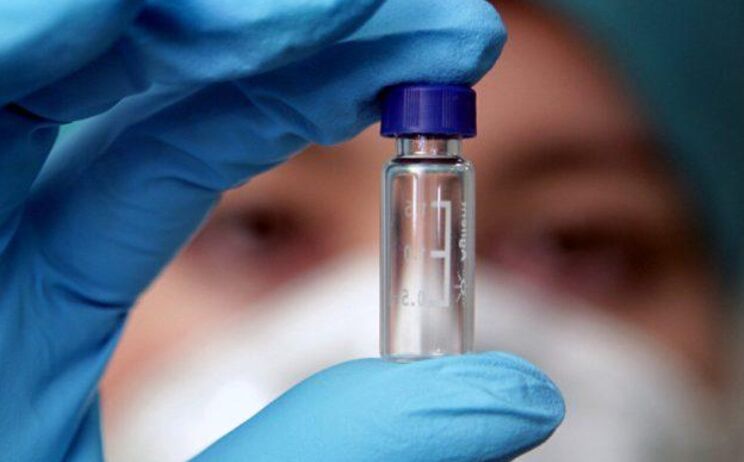
Worm eggs are microscopic in size. Invisible to the eye, they can be everywhere - on the ground, on transport handrails, on door handles, in children's litter box, in our pet's fur.
How to prevent worm infection or, if it has occurred, how to avoid dangerous complications?
Symptoms of helminths in humans
No one can consider themselves immune to worm infection. Even with the strictest observance of hygiene rules. To minimize the risk of infection, you need to be as informed as possible about the symptoms of helminths in humans and the prevention and treatment of helminth infestations.
The most common helminths:
worm.Parasites belong to the class of nematodes, round worms in cross section. The length of the female reaches 350 mm, males are much smaller. Roundworms are dangerous in both the intestinal and migratory stages.
Intestinal localization of parasites in complicated forms can lead to blockage of the intestine, exit of adult roundworms into the respiratory tract with risk of suffocation, blockage of the bile ducts and other complications. The migratory phase threatens the penetration of larvae into the lungs and other organs with the occurrence of serious pathologies.
Infection with ascariasis occurs by parasite eggs that come out of the patient's intestine with feces and mature in the soil to the invasive stage.
- Diphyllobotrium latum.This is a class of cestodes, one of the representatives of which is a broad tapeworm. Their feature is that they have 3 owners. The main organism in which worms develop for a sexually mature individual is a person and some animals (cats, dogs, pigs, etc. ). Intermediate hosts for Diphyllobotrium latum are freshwater crustaceans. Additional intermediate - fish (perch, pike, burbot). The tapeworm is infected by eating undercooked fish infested with larvae of parasites - plerocercoids.
earthworms.These are nematodes, like roundworms, but much smaller in size. The female has a length of up to 10 mm, the male - up to 5 mm. Enterobiasis is one of the most common helminthiases. Children are especially susceptible to them.
The most characteristic manifestation of enterobiasis is itching in the anus. It is explained by the departure of females to the perianal zone for laying eggs. In skin folds, embryos mature to the invasive stage in 5-6 hours. Putting them on your hands when scratching and then swallowing leads to reinfection.

forms of infection
The methods of infection with worms are determined by the invasive form of the parasite and the ways in which it penetrates the host organism.
Most parasitic worms have two infectious forms - eggs (in some cestodes they are called oncospheres) and larvae. The latter are sometimes called Finns or cysticerci. Eggs are microscopic in size, usually several tens of micrometers. Larvae can reach a size of several to tens of millimeters.
Most often, worms are infected orally - through the mouth.But some types of parasites can be invaded through the skin or by insect bites. When eggs are swallowed, the embryos they contain shed their shells, penetrate the intestinal wall into the bloodstream, and are transported in the blood throughout the body. Depending on the type of parasite, they can settle in the liver, lungs, heart, pancreas, kidneys, brain, eyes.
When infected with larvae, intestinal localization of the parasite occurs more often. Due to their considerable size, the larvae cannot penetrate the vessels and migrate along with the blood. They remain in the intestine, adhere to its wall, and grow to a sexually mature state, after which they begin to multiply.
Worm eggs often leave the gastrointestinal tract with feces. In some cases, for example, with cestodes, the evacuation of eggs from the intestinal tract can be carried out by fragments of worms - proglottids. They exit the intestine on their own through the anus.

The main types of helminthic lesions
The effectiveness of treating helminths in humans depends on the precision with which the clinical picture and the nature of the injury inflicted by the parasites on the body are determined. And they, in turn, depend on the stage of invasion - intestinal or migratory.
Intestinal invasion stage.During the intestinal phase, the main damage is done to the patient's digestive system, in particular, to the gastrointestinal tract. The worms damage the intestinal mucosa with their suction cups. This leads to inflammatory processes and disruption of the functionality of the gastrointestinal tract.
In addition to the fact that some of the nutrients are absorbed by the worms, the absorption function of the intestines is also impaired.Due to the release of anti-enzymes by the parasites, the digestive capacity of the gastrointestinal tract is reduced.. All this leads to a deficiency in the patient's body of nutrients, vitamins and trace elements.
In addition to antienzymes, worms secrete other metabolites that act as toxins in the host organism. Added to this is the decomposition of dead worm bodies. As a result, the patient's body is subjected to severe intoxication.
Some types of parasitic worms are able to penetrate from the gastrointestinal tract into adjacent organs and tissues - the biliary tract, gallbladder, liver parenchyma and other systems. Adult roundworms, for example, at high intensity of infection are able to penetrate the respiratory tract of the host. With a large number of parasites, mechanical bowel blockage is possible. This can be seen with both roundworms and tapeworms.
When parasitic worms enter the liver parenchyma, abscesses can develop, requiring surgical intervention.Perforation of the intestine with penetration of the contents of the gastrointestinal tract into the abdominal cavity and the development of peritonitis are not excluded. Due to the harmful effect of adult worms, pancreatitis, cholecystitis and cholangitis can develop.

migratory phase.Due to the possibility of penetration of larval embryos into almost any organ, the migratory phase of invasion can surpass the intestinal phase in terms of severity of consequences.
Larvae that develop from eggs in organs and tissues form inflammation and infiltration. If this happens in the lungs, the invasion manifests itself as bronchitis, pneumonia, asthmatic syndrome.
If the eggs of the parasite penetrate the brain (as, for example, oncospheres of cestodes), a single or several blistered finns form in its tissues. Its size can reach the size of a tennis ball. Due to the proximity of cysts to brain tissues, their surgical removal is associated with a high risk of purulent bladder rupture and the development of a secondary infection.
Intoxication of the patient's body with metabolites from live worms and toxins from the decomposition of their dead bodies leads to allergic reactions. Its result is fever, skin manifestations, headaches and dizziness.

Symptoms
Symptoms of helminth infection depend on many factors. There are characteristic manifestations of a particular type of invasion, but they are few.Most parasitic worms have symptoms similar to other diseases.This makes diagnosis difficult. These common symptoms include the following:
- Total deterioration of state, physical and mental weakness.
- Nausea, vomiting.
- Stool disorder, constipation and diarrhea.
- Discomfort, heaviness, abdominal pain of various localization.
- Change in appetite up or down.
- Unexplained weight loss. Even in the context of an increase in the amount of food consumed.
- Itching in the perianal region, feeling as if something is moving there.
- Allergic manifestations in the form of rashes.
- Cough.
- Difficulty breathing, asthmatic syndrome.
- bruxism. Teeth grinding during sleep is typical of children with itchy anus.
- Increased excitability, irritability, insomnia, chronic fatigue, depression.
- Headache.
- Elevated temperature, most often subfebrile. But sometimes it goes up to high values.
- Dizziness.
In the early stage of invasion, symptoms may be absent altogether or be so insignificant that they are not given much importance. In the future, with the increase in the intensity of the disease, the symptoms become more pronounced.
Symptoms of helminths in human blood can vary depending on which organ the migrating embryos have settled in.If the place of its location is the lungs, then the patient may have a fever, breathing problems may occur.Usually, in such cases, the infection is accompanied by a cough - unproductive or with sputum, which may have an orange color. The latter suggests that the larvae damaged small blood vessels in the lungs.
The symptoms of helminths are accompanied by nausea, vomiting, heaviness and pain in the abdomen, profuse salivation, impaired stools, and weight loss.
Heads up.In severe hepatic invasion, abscesses may develop with purulent content entering the abdominal cavity. This development of the disease threatens the patient's life.

drug treatment
The treatment of invasions depends on many factors. The main ones are the type of parasitic worms, the place of their location, the stage of the disease (migratory or intestinal), the intensity of the infection, the condition of the patient. But in any case, treatment must be preceded by the diagnosis of the disease.
The most common diagnostic test for infections caused by parasitic worms is a stool test. If it is not sufficient to make a diagnosis, a general, biochemical and/or enzymatic immunoassay is performed.Hardware diagnostics can also be used - ultrasound, radiography, MRI, etc.Having a complete picture of the disease, the doctor prescribes anthelmintic drugs.
Important.Treatment with drugs with a potent active substance can cause side effects. This limits the use of medications to some categories of patients. In particular, for pregnant and lactating women, children under a certain age, patients with certain viral and infectious diseases.
To combat nematodes located in the intestine and destroy extra-intestinal nematodes, different drugs are prescribed.
Important.Often, two courses of treatment are carried out with an interval of 2-3 weeks between them. This is because most antiviral drugs only kill adults. Their larvae and eggs remain intact. After the incubation period, a new generation of worms may appear, the destruction of which will require a second course.

The use of folk remedies
Treatment with folk remedies takes longer than drug therapy. But this relative disadvantage is offset by the mildness of herbal remedies and the absence of side effects.
There are many herbs that have an anthelmintic effect - nettle, tansy, celandine, wormwood, horsetail and many others. Antiparasitic plants contain components toxic to cestodes, nematodes and trematodes and generally have a bitter taste.
Many anthelmintic herbs are also endowed with antiseptic and antibacterial action. Its effectiveness depends on the correct preparation and administration of pharmaceutical forms. Here are some of the most popular herbal remedies and products. But you need to understand that this is just a small part of what really exists.

pumpkin seeds
It would not be an exaggeration to say that pumpkin seeds are the most popular anthelmintic remedy. They contain cucurbitine, which is very effective against nematodes and cestodes. Pumpkin seeds can be used not only for treatment but also for prevention.
Above all, cucurbitine is contained in the film, located between the core and the shell.Therefore, the seeds are best eaten with the husk. For the treatment, you need to eat 300 g of seeds at a time. For prevention, 100 g for adults and 70 g for children are sufficient. From pumpkin seeds, you can prepare solutions for enemas, which are effective against worms located in the large intestine.
Garlic
Garlic is a universal medicine that is not inferior in effectiveness to pumpkin seeds. It contains phytoncides and essential oils, which have a depressing effect on parasitic creatures of all kinds. Garlic is highly active against nematodes, in particular, ascaris.
Soda
Parasitic worms do not tolerate alkaline conditions well, so baking soda is an effective remedy against them. It can be taken orally, but the greatest effect of sodium bicarbonate is obtained with the preparation of an enema solution. It should be used to locate nematodes or cestodes in the large intestine.
Honey
Honey does not need to be advertised as a medicine, but not everyone knows that it is also effective as an anthelmintic. To take it for this purpose, you need half a teaspoon 9 times a day. During treatment throughout the day, you need to refuse food.
The next day, only fresh vegetables are allowed. As honey has no contraindications and side effects, it can be used to treat young children. It is recommended to give them a glass of water sweetened with a teaspoon of honey.

Carrot Juice
Even official medicine, which is sometimes very strict with folk remedies, admits that carrot juice has an anthelmintic effect. The amount of juice taken at a time is not limited by any requirements, everything must be within reason.
castor oil
Many types of nematodes and cestodes are located in the intestine. Some laxatives work well against them, in particular the familiar castor oil. For adults, this recipe is suitable. 80 ml of cognac is mixed with castor oil and drunk in one gulp before going to bed.
The procedure is done for 3 days. Children at 1-2 in the morning are given a sweet drink (compote, juice, tea), and after half an hour - 15-30 g of castor oil.
Conclusion
If the parasitic worms do not manifest themselves clearly (for example, in the form of whole individuals or their fragments in the feces), it is almost impossible to determine the presence of invasion on your own. Therefore, at the first appearance of symptoms that could indicate an infection, you should not hesitate to contact an infectious disease specialist.
In your arsenal there are tools that allow you to establish an invasion with a hundred percent probability. Delay in contacting a clinic or self-treatment based on self-diagnosis can end sadly, even in death.






































